

|
 |
Mind to Kill (A): The Complete First Series
R2 - United Kingdom - Network Review written by and copyright: Paul Lewis (13th March 2009). |
|
The Show
  An exceptionally dark series filled with Celtic angst, the Welsh crime drama A Mind to Kill (Lluniau Lliw, 1994-2002) began its life as a 1991 television movie focusing on a racially-motivated murder. Broadcast in Wales on the Welsh channel S4C and shown in England on ITV (and, later, Channel Five), the series was filmed simultaneously in both Welsh and English-language versions. (The Welsh version of the show carried the title Noson yr Heliwr, which translates roughly as ‘Evening/Night of the Hunter/Huntsman’). Focusing on the character of Detective Chief Inspector Noel Bain (Phillip Madoc), the series features a litany of brutal crimes with almost none of the comforting features of other, more high-profile procedural dramas, including A Touch of Frost (Yorkshire Television, 1992- ) and Inspector Morse (Central, 1987-2000). Each episode of A Mind to Kill pivots around an effective and frequently horror-tinged scene of murder, from the almost symbolic murder-in-the-rain by a hammer-wielding killer that takes place in ‘White Rocks’ to the scene in which a naked man is forced at gunpoint to dig his own grave in the woods before being shot and then brutally beaten with a shovel (in ‘Son of His Works’). Unlike Inspector Morse’s focus on romantic Oxford or even A Touch of Frost’s arguably gentrified representation of everyday environments, the locations in which A Mind to Kill takes place are bleak and relatively charmless: the murder at the heart of the first story, ‘White Rocks’, takes place in a chalet in a rundown holiday resort; ‘Black Silence’ (which features John Rhys-Davies in a key role) focuses on a Welsh mining community. Where many of the more popular television crime dramas could be said to sanitise murder and violence, in A Mind to Kill (as with the contemporaneous series Cracker, Granada 1993-1996) murder is depicted as an untidy and nasty business: in discussing Cracker in their book Reading Between Designs (2003), Britton and Barker claim that the series alludes strongly to the conventions of films noirs through its depiction of ‘horrifically violent, often sexually charged cases’ (201); the same could be said of A Mind to Kill. The outcome of this is that, like Fitz in Cracker, Bain is depicted as—like the traditional protagonist of film noir, epitomised in the roles associated with actors like Dana Andrews (Where the Sidewalk Ends, Otto Preminger, 1950), Glenn Ford (The Big Heat, Fritz Lang, 1953) or Robert Ryan (On Dangerous Ground, Nicholas Ray, 1952)—walking a fine line between socially-acceptable behaviour and deviance. Due to these characteristics, A Mind to Kill is frequently very dark, naturalistic and angst-ridden. As a television crime drama, it is much closer in spirit to classic films noirs or the primal Italian horror-thrillers (the thrilling all’italiana or, to use the denominator used more frequently by English-speaking fans, giallo) of the 1960s and 1970s (for example, Luigi Bazzoni’s Giornata nera per l’ariete/The Fifth Cord, 1971, or Aldo Lado’s Chi l’ha vista morire? / Who Saw Her Die? , 1972): for example, the almost primal horror of the murder at the front-end of ‘White Rocks’, which takes place during a stormy night and is witnessed by a child, recalls a similar scene in Dario Argento’s first American film, Trauma (1993), and alludes to the way in which murder is framed as a Freudian 'primal scene' by many other Italian-style thrillers. 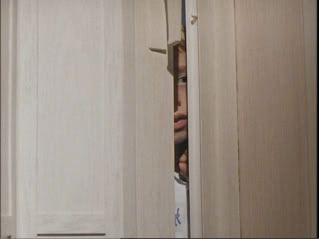 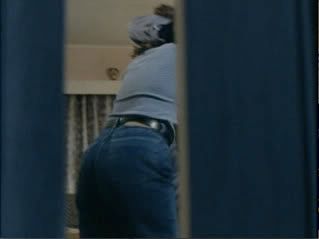 Where Britton & Barker claim that all television detectives are ‘in some measure progeny of Sherlock Holmes’ who ‘reveal their Holmesian lineage in the fact that they are idiosyncratic in appearance and eccentric in habits’ (ibid.: 201), in contrast with this general trend A Mind to Kill depicts Bain as an ‘everyman’. Through his near-omnipresent scowl, Madoc emphasises Bain’s sense of self-doubt and worry but also invests the character with a supreme sense of moral judgement and an air of absolute authority: this is evidenced in ‘White Rocks’, when Bain admonishes a crowd of holiday camp revellers for making jokes about the murder of a young woman. Furthermore, Bain’s investigations are counterbalanced with a representation of his home life: in contrast with Britton and Barker’s sweeping claim about television detectives, our glimpses into Bain’s home life serve to reinforce his normalcy rather than highlight any eccentricity in his tastes and habits. In this way, A Mind to Kill largely avoids the usual clichés of the genre: unlike Morse (John Thaw) in Inspector Morse, Bain is not the archetypal Sherlock Holmes-style cultured bachelor; and unlike Rebus (played by both John Hannah and Ken Stott) in Rebus (SMG, 2000-7), neither is Bain an embittered, lonely and hard-drinking Philip Marlowe-esque figure. Bain is a widower whose life is anchored by his adolescent daughter Hannah (Ffion Wilkins), who Bain seeks to protect from the world. (In later series, Hannah became a policewoman.) Furthermore, where Martin Priestman’s The Cambridge Companion to Crime Fiction (2003) asserts that a general trend in television detective programmes is to contrast ‘the styles of older investigators with their younger apprentices’ (241), in A Mind to Kill Bain works alone; this fact alone makes him a more vulnerable figure. 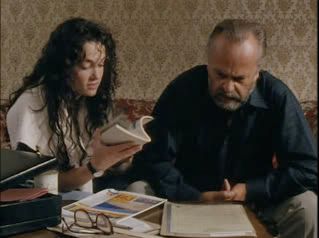 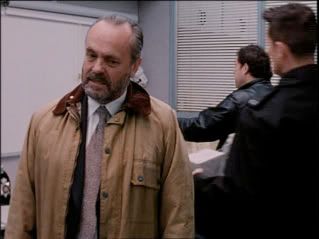 The series is surprisingly graphic. Not only are the murders depicted in brutal detail, but there are other ways in which the series offers a challenge to the sanitised representation of crime that pervades television drama. For example, in the aforementioned episode ‘White Rocks’, the murder victim is shown in the autopsy room; there’s nothing unusual about this, especially in a crime drama, but where the actress’ modesty would—in a more traditional drama—usually be protected by the use of a sheet, in A Mind to Kill this scene features full nudity from the actress playing the victim. Furthermore, there is some full male nudity during the aforementioned murder scene in the episode ‘Son of His Works’. This combination of graphic violence and levels of nudity that are not traditionally a part of the television landscape is a little jarring in a genre that, throughout the 1990s, became increasingly conservative. In this way, the series feels refreshingly honest but may upset or disturb viewers who are expecting another Inspector Morse or A Touch of Frost. In fact, this may be the reason for the series’ relative lack of popularity in England, where for most of its run the series was buried in the schedules of the then-little watched Channel Five. 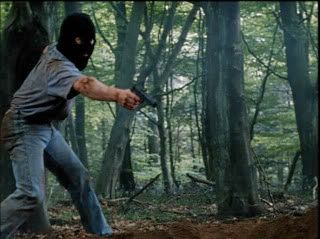 Disc One: 1. ‘White Rocks’ (95:11) 2. ‘Gameboys’ (103:20) Disc Two: 3. 'Rest Not Secure' (98:31) 4. 'Black Silence' (94:50) Disc Three: 5. ‘Son of His Works’ (96:42) 6. 'Rachel Hardcastle' (94:10)
Video
This release contains a fullframe (4:3) presentation of the first series of A Mind to Kill. However, the opening and closing credits are presented in a ratio of approximately 1.66:1, and later episodes have been screened on Channel Five in this ratio. Some shots also seem to suffer from cropping (examples from ‘White Rocks’ are provided below). Other contemporaneous dramas (such as Cracker) where shot in the 1.66:1 ratio too. (In the case of Cracker, the series has been released to DVD in non-anamorphic 1.66:1 and has been repeated on digital television in a cropped form.) However, if A Mind to Kill is indeed mildly-cropped, it’s not too detrimental and it’s a very small compromise to make for the release of such a dramatically-interesting series. The three screen grabs are from 'White Rocks'. The first two show some very tight framing along the horizontal plane, perhaps evidence of minor cropping; the final image shows the final shot of the episode, presented in a letterboxed screen ratio. 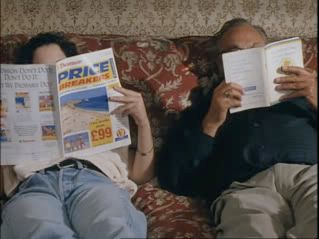 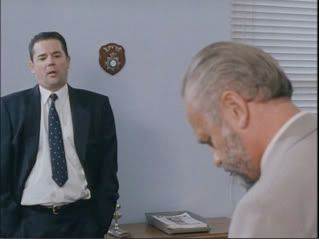 
The presentation of the series is handsome; colours are rich and vibrant, and blacks are deep and saturated. This is a series with a very noir-ish aesthetic, and this DVD set replicates that visual style well.
Audio
The series is presented with a two-channel stereo track. This is clear and without any problems. There are no subtitles.
Extras
There are no extra features. It would have been nice to see some sort of contextualisation of the series, perhaps through an interview with Madoc or with some of the key personnel behind the show. Further, it would have been very interesting to be able to see extracts from the Welsh-language version of A Mind to Kill.
Overall
A Mind to Kill is fascinating viewing, especially for fans of dark crime thrillers. Fans of films noirs will find much to enjoy here, as will fans of the Italian-style horror-thrillers of the 1960s and 1970s. I have to confess that for a long time, I avoided the series as I assumed it would be another ‘heritage’ procedural in the manner of Inspector Morse or many of the other more conservative British television crime dramas of the 1990s. (As a fan of Jimmy McGovern’s more challenging Cracker, I could appreciate the strengths of series such as A Touch of Frost but never found them fully engaging.) Admittedly, the last few series of A Mind to Kill were a little weak, especially when the producers and writers decided to allow the character of Hannah to become a policewoman (in the charge of her father, no less). However, the early series of the show contain some very strong storylines and some haunting scenes of brutality; whilst not as issue-led as Cracker, A Mind to Kill offers an antidote to the sanitised and comforting procedural drama that, arguably, still dominates the television landscape, especially in Britain. Despite the lack of contextual material and the apparent cropping of the image, this release gets a strong recommendation, and I sincerely hope that Network release later series of A Mind to Kill. References: Brandt, George W., 1993: British Television Drama in the 1980s. Cambridge University Press Britton, Piers D. & Barker, Simon J., 2003: Reading Between Designs: Visual Imagery and the Generation of Meaning in ‘The Avengers’, ‘The Prisoner’, and ‘Doctor Who’. University of Texas Press Priestman, Martin, 2003: The Cambridge Companion to Crime Fiction. Cambridge University Press For more information, please visit the homepage of Network DVD.
|
|||||

|